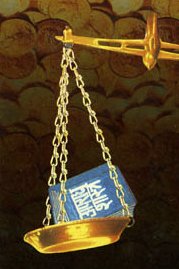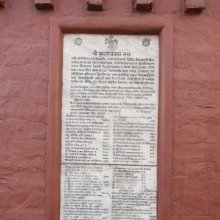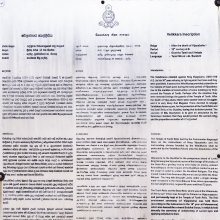Senadhipati, Senādhipati, Sena-adhipati: 5 definitions
Introduction:
Senadhipati means something in Hinduism, Sanskrit, the history of ancient India. If you want to know the exact meaning, history, etymology or English translation of this term then check out the descriptions on this page. Add your comment or reference to a book if you want to contribute to this summary article.
Images (photo gallery)
In Hinduism
Arthashastra (politics and welfare)
Source: Shodhganga: Kakati Ganapatideva and his times (artha)Senādhipati (सेनाधिपति) and Daṇḍanāyaka.—Though these terms refer literally to an officer connected with the army, they also take part in administrative machinery. He is the leader of the forces. Sometimes he acted as mahāpradhāna and paṭṭasāhiṇi also.

Arthashastra (अर्थशास्त्र, arthaśāstra) literature concerns itself with the teachings (shastra) of economic prosperity (artha) statecraft, politics and military tactics. The term arthashastra refers to both the name of these scientific teachings, as well as the name of a Sanskrit work included in such literature. This book was written (3rd century BCE) by by Kautilya, who flourished in the 4th century BCE.
India history and geography
Source: Cologne Digital Sanskrit Dictionaries: Indian Epigraphical GlossarySena-adhipati.—(IE 8-3; EI 23; SII 11-1), same as Sen- ādhikārika, etc.; sometimes also called Mahāpradhāna, Hĕri- sandhivigrahin, Kaḍita-vĕrgaḍĕ, etc., additionally. Cf. Mahā- senādhipati, Senāpati, etc. Note: sena-adhipati is defined in the “Indian epigraphical glossary” as it can be found on ancient inscriptions commonly written in Sanskrit, Prakrit or Dravidian languages.

The history of India traces the identification of countries, villages, towns and other regions of India, as well as mythology, zoology, royal dynasties, rulers, tribes, local festivities and traditions and regional languages. Ancient India enjoyed religious freedom and encourages the path of Dharma, a concept common to Buddhism, Hinduism, and Jainism.
Languages of India and abroad
Sanskrit dictionary
Source: Cologne Digital Sanskrit Dictionaries: Monier-Williams Sanskrit-English DictionarySenādhipati (सेनाधिपति):—[from senā] ([Jātakamālā]) m. the commander of an army.
[Sanskrit to German]
Sanskrit, also spelled संस्कृतम् (saṃskṛtam), is an ancient language of India commonly seen as the grandmother of the Indo-European language family (even English!). Closely allied with Prakrit and Pali, Sanskrit is more exhaustive in both grammar and terms and has the most extensive collection of literature in the world, greatly surpassing its sister-languages Greek and Latin.
Kannada-English dictionary
Source: Alar: Kannada-English corpusSēnādhipati (ಸೇನಾಧಿಪತಿ):—[noun] the chief of an army.
Kannada is a Dravidian language (as opposed to the Indo-European language family) mainly spoken in the southwestern region of India.
See also (Relevant definitions)
Partial matches: Adhipati, Sena, Cena.
Query error!
Full-text: Samasta-sena-adhipati, Senevala, Senevalla, Shenapa, Senadhipa, Senatipati, Senani, Sena-adhikarika, Senapati, Gajasahini, Ashvasahini, Mahasenadhipati, Preggada, Kadita-vĕrgadĕ, Mahasandhivigrahin, Pattasahini, Mahapradhana, Byahatti.
Relevant text
Search found 2 books and stories containing Senadhipati, Sena-adhipati, Senādhipati, Sēnādhipati; (plurals include: Senadhipatis, adhipatis, Senādhipatis, Sēnādhipatis). You can also click to the full overview containing English textual excerpts. Below are direct links for the most relevant articles:
Notices of Sanskrit Manuscripts (by Rajendralala Mitra)
Page 21 < [Volume 15 (1911)]
Tilakamanjari of Dhanapala (study) (by Shri N. M. Kansara)
8. Government officers and servants < [Chapter 14 - Political data]

